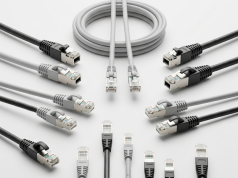Traveling can be exciting, but it also brings risks, especially when it comes to your mobile device. Your phone holds sensitive information, like personal contacts, banking details, and more. Knowing how to protect a mobile device while traveling can save you from serious issues. This article will provide practical steps to ensure your mobile device stays safe and secure throughout your journey.
Table of Contents
1. Secure Your Device with a Lock Screen
A lock screen provides the first layer of defense against unauthorized access. Use a password or PIN, but don’t stop there. Take advantage of advanced security options such as fingerprint scanning or facial recognition. These are harder for anyone to bypass.
A strong lock screen not only prevents unauthorized access but also safeguards your personal data in case your phone is lost or stolen. Make sure to choose a method that suits you and provides the highest level of security.
2. Enable Remote Tracking and Data Wiping
No one wants to lose their phone, especially when traveling. But if it happens, ensure you have the tools to protect your data. Remote tracking allows you to find your device quickly. Most smartphones today come with built-in tracking features like Apple’s “Find My iPhone” or Google’s “Find My Device.”
If you cannot recover your device, remote data wiping will erase all your information. It ensures that no one can misuse your sensitive data. Turn on these features before traveling to prevent any future data loss.
3. Keep Your Device Physically Protected
Accidents happen. Phones are often dropped or exposed to the elements. To protect your device from physical damage, use a durable case. Consider a waterproof case if you plan to spend time near water. These cases can prevent water damage, especially in rainy areas or around swimming pools.
Also, use a screen protector. It adds an extra layer of defense against scratches and cracks. This small investment can save you from costly repairs and damage.
4. Avoid Using Public Wi-Fi for Sensitive Transactions
Public Wi-Fi is convenient, but it’s not safe for sensitive transactions. Hackers can easily intercept your data on unsecured networks. When you access banking apps or make purchases, use mobile data or a private hotspot instead.
If you must use public Wi-Fi, use a VPN (Virtual Private Network). A VPN encrypts your connection, making it much harder for hackers to intercept your data.
5. Backup Your Data Regularly
Data loss can be devastating, especially when traveling. Always back up your device before your trip. Use cloud storage options like iCloud or Google Drive to ensure your photos, contacts, and important documents are safe.
This backup acts as a safety net if your device is lost, stolen, or damaged. It’s a simple way to ensure you don’t lose valuable information during your travels.
6. Disable Bluetooth and NFC When Not in Use
Bluetooth and NFC are great technologies for transferring files or connecting to devices. However, leaving them on all the time can put your device at risk. Hackers can exploit these technologies to gain unauthorized access to your phone.
Turn off Bluetooth and NFC when you don’t need them. This small step reduces the risk of someone connecting to your device without your knowledge.
7. Use Two-Factor Authentication (2FA)
Two-factor authentication (2FA) adds an extra layer of security to your apps and accounts. After entering your password, 2FA requires you to verify your identity with another factor, such as a text message code.
Enable 2FA on your important accounts like banking apps, email, and social media. This simple step ensures that even if someone gets your password, they won’t be able to access your accounts without the second verification.
8. Be Wary of Mobile Device Theft and Pickpockets
When traveling, especially in crowded areas, pickpockets are a real threat. To protect your device, don’t leave it in easily accessible places. Carry your phone in a secure, concealed location, such as a money belt or neck pouch.
Be aware of your surroundings. If you’re sitting in a café or on public transportation, keep your phone in your hand or securely in a bag. Avoid placing it on tables or in your back pocket.
Read More: Which of the Following Is Not a Traveler Responsibility
9. Secure Your Apps with Passwords or Biometric Authentication
Many apps contain sensitive information, including your bank details, messages, and personal documents. Lock these apps with a password or biometric authentication for added protection.
If your phone is unlocked, you can still secure important apps. Use third-party app lockers that allow you to set a password for specific apps. This extra layer ensures that no one can access your private data.
10. Avoid Downloading Untrusted Apps
Only download apps from trusted sources like the App Store or Google Play. Avoid third-party app stores as they may contain malware. Always check the reviews and developer information before installing any app.
If an app asks for excessive permissions or seems too good to be true, it’s best to avoid it. Installing an untrusted app can put your device at risk of malware or spyware.
11. Regularly Update Your Mobile Device’s Software
Software updates are essential for device security. They often include patches that fix security vulnerabilities. Always keep your mobile device up to date with the latest operating system and app updates.
Most devices have automatic updates enabled, but it’s a good idea to check manually, especially before traveling. Don’t ignore security updates, as they protect your device from new threats.
12. Use Secure Payment Methods
When paying for things using your mobile device, always opt for secure payment methods. Mobile payment systems like Apple Pay, Google Pay, or Samsung Pay offer a higher level of security than using a credit card directly.
These payment systems use tokenization, which replaces your actual credit card number with a unique code. This makes it harder for thieves to steal your financial information. Also, these systems often require biometric authentication for additional security.
13. Turn Off Auto-Connect to Wi-Fi and Bluetooth
Auto-connect features can be convenient, but they can also expose your device to risks. Disable the auto-connect feature for both Wi-Fi and Bluetooth. This ensures that your phone won’t automatically connect to unsecured or unknown networks.
Manually choosing networks and devices to connect to gives you more control and keeps your device secure from unwanted connections.
14. Use a VPN for Secure Internet Access
A VPN encrypts your internet traffic, making it nearly impossible for hackers to intercept. This is especially important when using public Wi-Fi. A VPN ensures that your data remains secure, even on an unsecured network.
Many VPN services are available for both iOS and Android devices. Consider installing one before traveling to maintain your privacy and security online.
15. Consider Using a Travel-Specific Mobile Device
If you travel frequently or to areas with high theft risks, consider using a travel-specific mobile device. This could be a less expensive phone or a device with only the essential apps needed for your trip.
A travel-specific phone acts as a backup. It protects your primary device from theft or loss. You can store only the necessary information on it, such as maps, travel bookings, and emergency contacts.
Conclusion
Protecting your mobile device while traveling is essential for safeguarding your personal data, finances, and overall peace of mind. From using secure lock screens to enabling remote tracking, there are several steps you can take to reduce the risk of theft, loss, and data breaches.
Keep your apps and device updated, use strong security measures like two-factor authentication, and be cautious about public Wi-Fi. With these precautions in place, you can travel confidently, knowing that your device is safe and secure. Safe travels!
For additional security tips on keeping your mobile device safe, visit Cybersecurity Best Practices.







